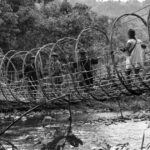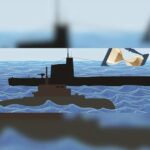
SOURCE: ENS
US commander General Colin Powell said, ‘The most important thing I learned is that soldiers watch what their leaders do. You can give them classes and lecture them forever, but it is your personal example they will follow.’ Leading by example even into the gravest danger is what distinguishes the real commanders of men from the time-servers. We’ve recently lost two redoubtable Guards officers, Colonel Ashutosh Sharma, Commanding Officer (CO) of 21 Rashtriya Rifles, and Major Anuj Sood in a counter-insurgency operation in Kashmir.
There have been some varying reactions to the sad event of two commanders being martyred in the same operation. Some critics felt that the loss of a CO was unacceptable, that Colonel Sharma should not have been in the frontline. There has been some muttering about ‘glory-seeking’. My considered view is that Colonel Sharma’s presence at the head of his troops courting the greatest danger was in the highest traditions of the follow-me style of leadership favoured by the Army.
The culture of follow-me was always prevalent. It got a further impetus after Independence and the change of tasks to defending one’s own country. The tradition of commanders leading from the front and becoming casualties is well-founded. The first such case was that of Brigadier Rajinder Singh of the Jammu and Kashmir State Forces being killed while holding off the Pakistani-sponsored raiders on the main Muzaffarabad-Srinagar road. By his heroic action and sacrifice he bought enough time for the Indian Army to fly into the Kashmir Valley and organise its defence. He was awarded the Maha Vir Chakra. The CO of the first battalion to fly in, Lieutenant Colonel Ranjit Rai too met a heroic death at the head of his troops.
These two examples were the first in a long series of commanders putting their personal safety at stake while setting an example to their troops. Ashutosh Sharma was the most recent manifestation. In times to come the men of 21 Rashtriya Rifles will consider it to have been a privilege to have served under him. Rest in Peace.
Priorities for the Military
Last Sunday the nation awoke to the unusual sight of military bands playing in silence zones outside hospitals with helicopters noisily showering petals from above and other such gestures meant to honour medical staff. All very well but as the day went on, we were rudely shocked to learn of the killing of five security forces bravehearts by terrorists. That brought a sombre reminder of the real role that the armed forces are supposed to play – to fight the country’s external and internal enemies.
This isn’t the first time the armed forces have been co-opted by the political executive for undertaking duties other than those which are strictly military in nature. This happened earlier in the 50s in the first flush of Independence and the need to chart a new national narrative, The Government for instance wanted the Army to take part in the Grow More Food campaign, something which the top brass resisted considering that it would impede training.
The notorious General BM Kaul tried to alleviate chronic housing shortages by getting his non-engineer troops to construct their own accommodation at Ambala under Operation Amar. While the politicians applauded the rest of the Army wasn’t amused. A new culture was seen to have been born. Recently a new beginning was made by getting a combat engineer unit to construct railway footbridges in Mumbai. The fact that the unit had a major role as the demonstration and trials regiment for the College of Military Engineering was lost sight of.
In emergencies like the rebuilding of a collapsed footbridge outside the venue of the Commonwealth Games in 2010, the Army was of course best suited to undertake swift reconstruction. After all national pride was involved. Otherwise the focus of the Defence Services’ activities and direction must remain the tackling of external or internal enemies and the occasional task undertaken in aid of civil power.
Technical Surveillance in Kashmir
Riyaz Naikoo, operations head of the Hizb-ul-Mujahideen, has been eliminated in a brilliant security forces operation. He had managed to elude his pursuers for many years by taking a variety of precautions including changing hideouts frequently. Most importantly, he avoided a visible electronic signature by avoiding the use of a cellphone, using instead the Virtual Private Network (VPN) to communicate with his ISI handlers and group members. His preference was for the secure messaging platform Bat Messenger, where his username was Williamson. He seems to have used this on other communication networks too.
The J&K Police’s Special Operations Group (SOG) with its superb human intelligence network backed up by a liberal use of financial rewards managed to get hold of the number of a cellphone in his possession meant for emergency use. This remained on their radar using the resources of all the intelligence agencies active in the region. Unfortunately for Naikoo he used his cellphone whose location was instantly pinpointed as being that of his native village, Beighpora in Pulwama district by the intelligence services’ technical surveillance. An intensive search operation was launched backed up by a most effective cordon. Digging machinery was used to excavate likely hideouts. His hideout in an attic was unearthed and a firefight ensued leading to his elimination. Strong deployment of the CRPF at vital points, equipped with riot control devices prevented the usual attempts by the insurgents’ overground workers to bring people out in the streets to hamper the operation.
Behind this and many other successes lies the dedicated work of the technical intelligence services of intelligence agencies which has been most effective. Here I’d like to specially mention the SOG and Military Intelligence. The plethora of listening devices, sensors, video cameras, interceptors and electronic bugs planted by them reveal a wealth of actionable intelligence.
Hats off to the dedicated operators, surveillants, analysts and technical staff who operate on the frontline of the anti-insurgency operations as much as security and strike forces.
https://defencenewsofindia.com/the-military-leadership-culture-of-follow-me/






